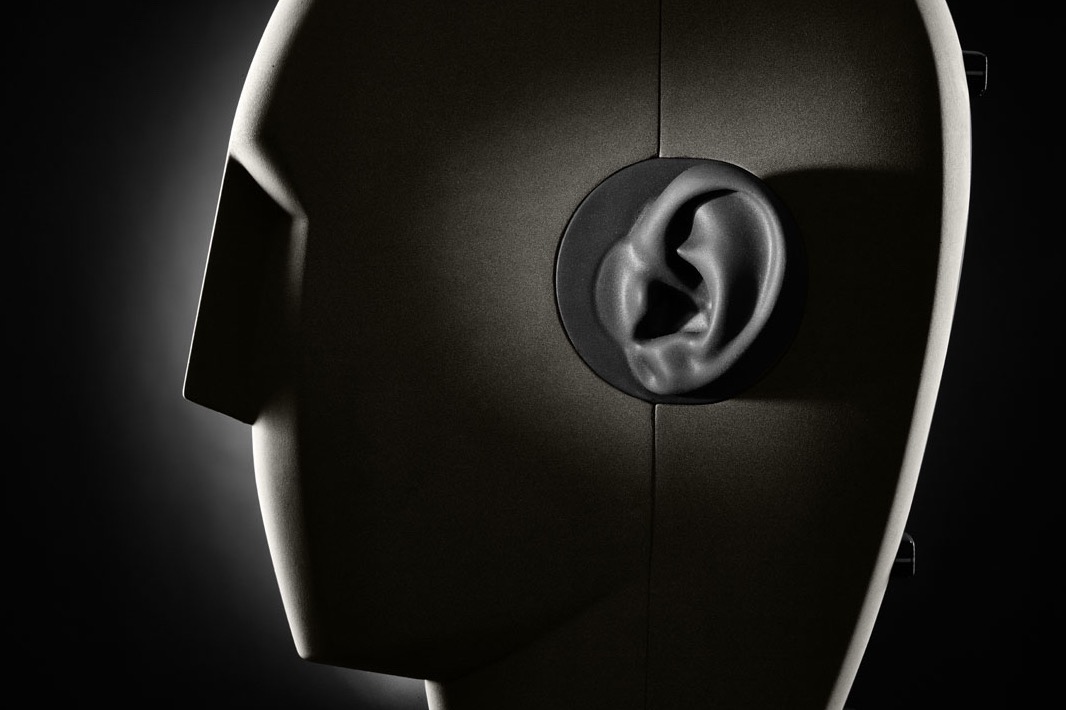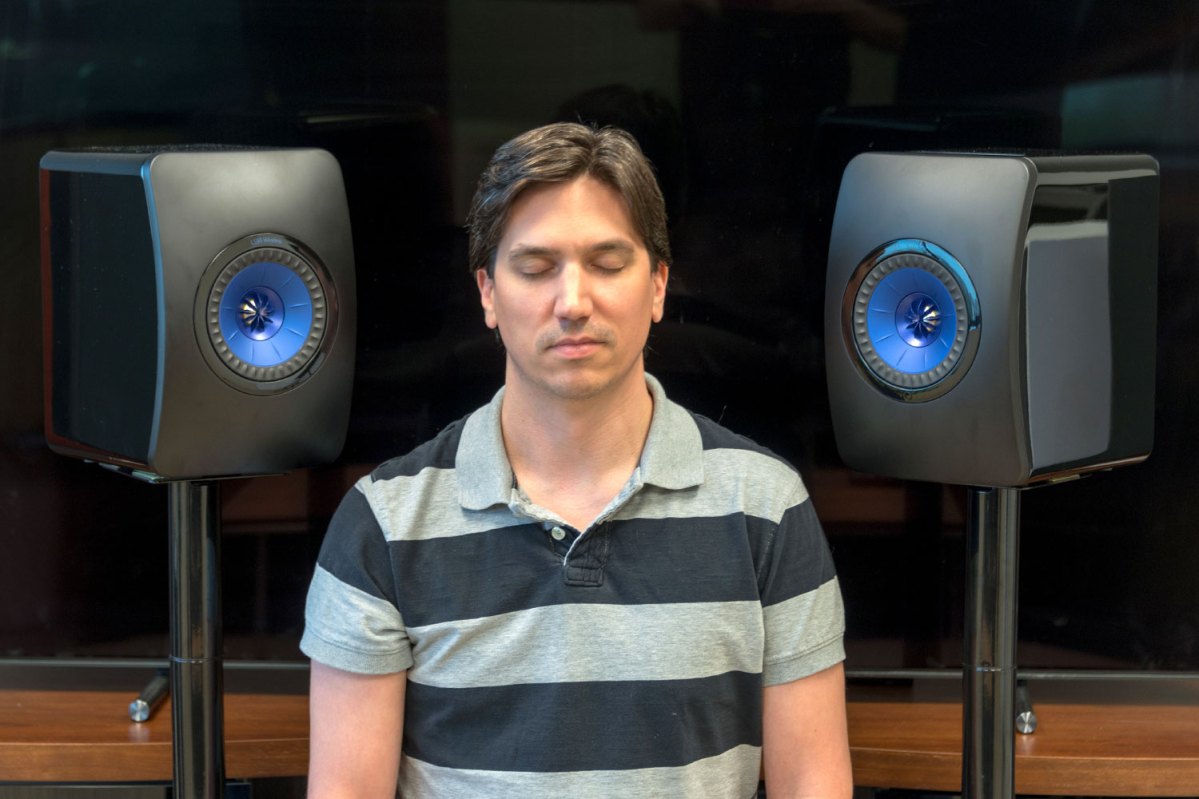If you spend a lot of time on YouTube, you may have seen something called 8D Audio showing up in the Up Next column or in your recommended videos. 8D? As in eight-dimensional audio? Yes, it’s a thing. But how can audio possess eight dimensions? How can our ears hear something in eight dimensions? And why do 8D videos always tell us to put our headphones on?
In short, what the heck is 8D audio, anyway? Give us a few minutes and we’ll explore every dimension of 8D audio. Ear we go …
How can audio have eight dimensions?

Let’s get one thing settled right away: There’s no such thing as audio that possesses eight dimensions, nine dimensions, or even 100 dimensions, no matter what a YouTube video may claim. In fact, audio doesn’t really possess any dimensions at all.
Our brains are incredible machines, however, and they can interpret incoming sounds from our ears in three dimensions — the same three dimensions we all inhabit in our daily lives: height, width, and depth. It’s how we can tell the difference between a sound that’s coming from behind us and one that is in front of us.
We’ll explore how the human brain does this a little later, but for now, we’ll simply point out that “8D audio” doesn’t actually possess eight dimensions. Instead, think of it as a marketing term used to label a very specific kind of audio recording.
So what is 8D audio?

8D audio uses the principles of binaural recording to trick our brains into thinking that sounds are coming from different places in three-dimensional space. When a song is given the 8D-treatment, it can create the impression that you’re standing in the middle of a room (or a gym, or a concert hall, etc.) while all of the musicians and vocalists magically “move around” you.
Try it out below with this sample Eminem track — make sure you’re wearing headphones.
Wait, hasn’t this been done before?
Absolutely. In fact, if you’re a fan of listening to music with headphones, you’ve probably encountered lots of tracks — typically from the ’70s heyday of studio production — that use this movement effect. The difference is that most professionally produced songs use it very sparingly, and never continuously.
On the other hand, 8D uses it as a defining characteristic. 8D tracks are always on the move through space.
The idea behind that signature movement of 8D audio is that it creates a soothing feeling, though whether it actually does or not is highly subjective. In this way, 8D audio is similar to ASMR (autonomous sensory meridian response) — another YouTube audio phenomenon whose fans insist can help them relax, sleep better, or just experience pleasurable chills. There are others, of course, who find it awful.
To my ears, the Eminem track above simply sounds like I’m wandering back and forth in front of a single speaker that’s playing Lose Yourself.
As with any art form, there are downright masterful uses of 8D and shockingly bad ones too. At it’s best, 8D audio treatments of your favorite songs can give you an entirely new way to enjoy them. At its worst, it can produce feelings of dizziness and nausea.
Where can I find 8D audio?
YouTube is probably the easiest place to find 8D audio tracks. With over 11 million matches to “8D audio” on Google, it’s a huge collection, plus there’s no subscription needed. YouTube is also the place for 8D treatments of your favorite artists. However, subscription streaming services like Apple Music and Spotify also have growing catalogs of 8D tracks. These are almost exclusively instrumental versions of popular songs or original works, but you won’t get Billie Eilish’s Bad Guy, for instance, in 8D on Apple Music unless Eilish releases one herself.
How does 8D audio work?

The brain figures out where sounds are coming from through several cues. There’s a discrepancy in how long a sound takes to reach each of our ears. A sound that originates to our right side will hit our right ear ever so slightly faster than it hits our left ear. That’s one cue. Then there’s echo and reverberation of sound as it bounces off objects in our environment. Finally, there’s filtering — how the actual quality of the sound changes from one ear to the other based on how something as simple as the shape of our heads affects it.
Our sense of visual depth perception works using similar kinds of cues, the biggest being the discrepancy between the version of the world that each of our eyes sees.
So if you can manipulate what each ear hears by faking these cues, it’s possible to trick the brain into thinking it’s hearing a sound that originates from a specific point in space. Binaural audio does just that, but it requires the use of headphones in order to isolate what each ear hears. Far from a new idea, the science of binaural audio has been around for over 100 years.
Analog binaural recording is done by physically moving a sound source around a set of microphones that simulate human ears, in order to achieve this effect. But thanks to 3D audio software tools, you can do the same thing digitally on a computer — no studio or special microphones required.
Check out this cool explainer from Dear VR, which demonstrates how its audio software can manipulate sound:
This explains the sudden explosion of 8D audio on YouTube: If you have the right software, it’s as easy to create 8D audio as it is to use Garage Band, Audacity, or any number of other audio editing programs.
Why do I need headphones for 8D audio?

A set of headphones may look like a miniature set of stereo speakers strapped to the sides of your head, but they’re different in one key way: Sound from one earcup never extends to the other ear or vice versa. With a pair of speakers, on the other hand, both ears hear both speakers nearly simultaneously, something known as crosstalk. Crosstalk prevents the brain from deciphering accurate locations for sounds.
That’s why we have 5.1, 7.1, and even 5.1.2 surround sound speaker systems. The only way to produce a realistic sense of depth with speakers is to physically position those speakers in front, beside, behind, and above the listener, and then carefully control which sounds come from each speaker.
OK, so what about 9D, 16D, 24D, 48D, and 100D audio?
As near as we can figure after listening to a selection of these tracks on YouTube, there is no real difference between any of them. All do the same basic trick of moving some or all of a song’s elements around in simulated 3D space.
Some of them move just the vocals, while others make each instrument appear to be choreographed in its own unique dance.
Is 8D going to be big?

Though it’s a fun use of a very old idea, we suspect 8D and its variants will never amount to much more than a gimmick. It doesn’t work without headphones and all of that perpetually moving sound can be tiring.
Then there’s the question of legality. Of all the 8D tracks we found on YouTube, none appeared to be officially sanctioned by the artist (or their label) whose song was being manipulated. Unless these rights-holders get involved, don’t be surprised if your favorite 8D tracks are suddenly removed.
True spatial audio or 3D music, however, like Dolby Atmos Music and Sony 360 Reality Audio is still in its infancy, so it’s quite possible that in the future it could become an experience that music fans seek out. These formats are cutting edge, top-notch technology. Producers and musicians create them in a studio so record labels can distribute them to well-known streaming devices like Spotify or Pandora Radio. You can appreciate these formats on headphones (where they also leverage binaural techniques), surround sound home theater systems, and even single 3D speakers like the Amazon Echo Studio.
Not all 8D audio you can get your hands on comes from musicians and producers like the tracks available on Pandora and Spotify. Much of the 8D audio you’ll encounter on YouTube consists of well-known songs edited by unknown or independent editors and producers without the original artist’s permission.
Chances are, you’ll hear a difference almost immediately if you get the opportunity to listen to a 3D audio track. This audio effect creates a surround sound listening experience. All the different sounds in their complexity envelop your eardrums, instead of a singular simplistic sound coming out of your headphones.
True to its name, 8D audio covers every musical sound and production angle, letting you hear multiple distinct aspects individually and simultaneously. Of course, you’ve still got to figure out whether 8D audio is the right choice for you. The good news is, all you need to find out is a set of headphones and the patience to explore the depths of YouTube’s 8D audio collection.



